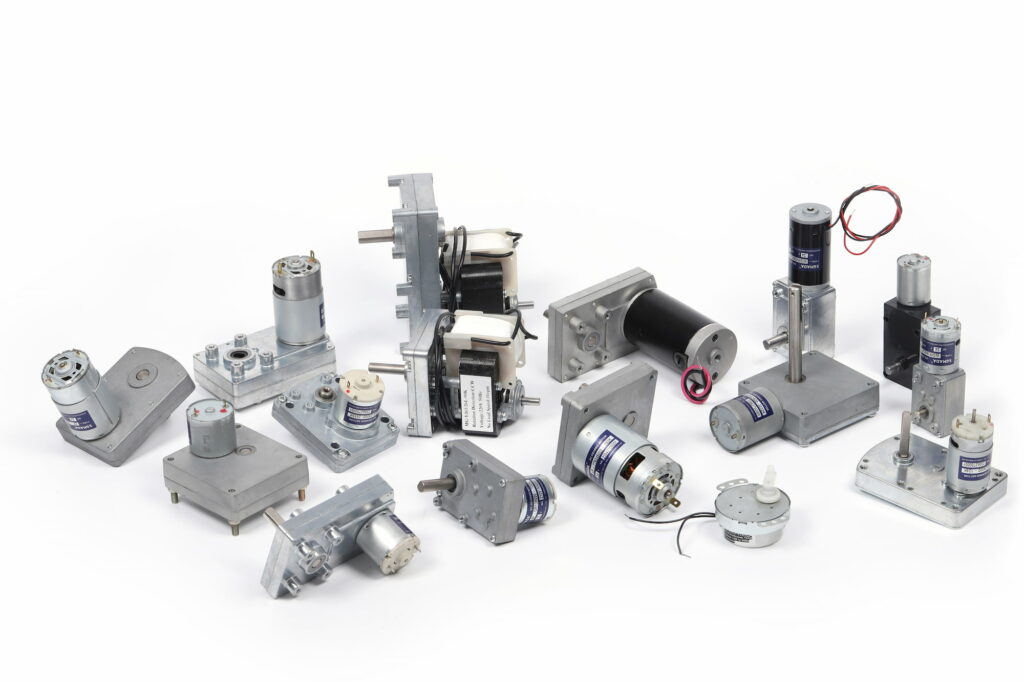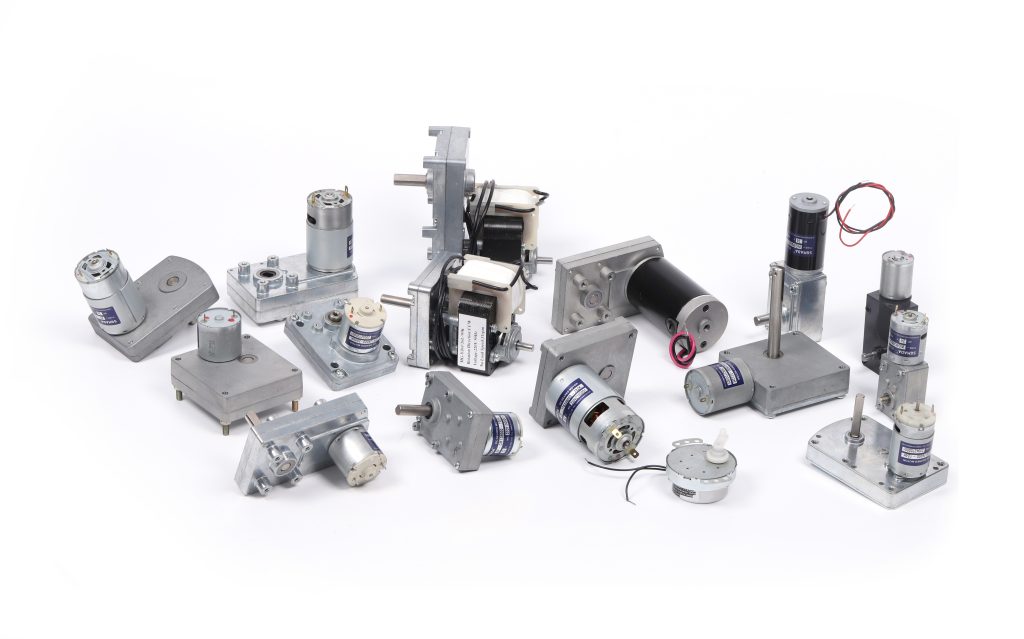Introduction
In the world of mechanical engineering, gear motors play a crucial role in various applications. One such type of gear motor that has gained significant popularity is the worm gear motor. This article will delve into the definition, components, working principle, applications, and a comparison with other types of gear motors. So, let’s dive in and explore the fascinating world of worm gear motors.
I. Definition of Worm Gear Motor
A worm gear motor is a type of gear motor that consists of two main components: the worm gear and the worm. The worm gear is a cylindrical gear with helical teeth that resemble a screw, while the worm is a cylindrical shaft with a spiral thread that meshes with the worm gear. This unique design allows the worm gear motor to provide high torque and reduce rotational speed.

II. Importance and Applications of Worm Gear Motor
The importance of worm gear motors lies in their ability to transmit power and motion efficiently in various applications. Due to their high torque output and compact design, worm gear motors are widely used in industries such as manufacturing, automotive, robotics, and automation.
A. Industrial Machinery and Equipment
In the industrial sector, worm gear motors are extensively used in machinery and equipment that require precise and controlled movement. They are commonly found in conveyor systems, packaging machines, lifting equipment, and material handling systems. The high torque capability of worm gear motors makes them ideal for heavy-duty applications.
B. Automotive Industry
In the automotive industry, worm gear motors find applications in power windows, windshield wipers, and seat adjustment mechanisms. Their compact size and ability to provide high torque make them suitable for these automotive components, ensuring smooth and reliable operation.
C. Robotics and Automation
Worm gear motors play a vital role in robotics and automation systems. They are used in robotic arms, CNC machines, automated assembly lines ,litter robot box and etc. The precise motion control and high torque output of worm gear motors make them indispensable in these applications, ensuring accurate and efficient operation.
Stay tuned for the next part of this article, where we will explore the components of worm gear motors in detail. But before we move on, let’s summarize the key points discussed so far:
| Section | Summary |
|---|---|
| Introduction | Introduction to worm gear motors and their significance |
| I. Definition | Definition of worm gear motor and its components |
| II. Importance | Importance and applications of worm gear motor in various industries |
Continue reading to gain a deeper understanding of worm gear motors and their working principles.
II. Components of Worm Gear Motor
To understand the inner workings of a worm gear motor, let’s take a closer look at its key components:
A. Worm Gear
- Definition and Function
The worm gear is a cylindrical gear with helical teeth that resemble a screw. It is the main driving component in a worm gear motor. The helical teeth of the worm gear mesh with the spiral thread of the worm, allowing torque to be transmitted from the worm to the gear. This unique design provides a high gear reduction ratio, resulting in a significant decrease in rotational speed.
- Types of Worm Gears
There are several types of worm gears, including:
- Single-Thread Worm Gears: These have a single thread on the worm, resulting in a lower gear reduction ratio.
- Multi-Thread Worm Gears: These have multiple threads on the worm, allowing for a higher gear reduction ratio.
- Double-Enveloping Worm Gears: These have a unique tooth profile that provides increased load capacity and efficiency.
B. Worm
- Definition and Function
The worm is a cylindrical shaft with a spiral thread that meshes with the worm gear. It is responsible for transmitting rotational motion and torque from the motor to the worm gear. The spiral thread on the worm creates a sliding action, which allows for smooth and efficient power transmission.
- Types of Worms
Worms can be classified based on their thread profiles and materials. Some common types include:
- Single-Start Worms: These have a single thread on the worm shaft.
- Multi-Start Worms: These have multiple threads on the worm shaft, resulting in a higher gear reduction ratio.
- Bronze Worms: These are made of bronze material and are commonly used in applications where self-lubrication is required.
- Steel Worms: These are made of steel and offer high strength and durability.
C. Motor
- Definition and Function
The motor is the driving force behind the worm gear motor. It provides the necessary power to rotate the worm, which in turn drives the worm gear. The type of motor used in a worm gear motor can vary depending on the specific application requirements.
- Types of Motors Used in Worm Gear Motors
There are various types of motors that can be used in worm gear motors, including:
- DC Motors: These motors are commonly used in low-speed applications that require high torque.
- AC Motors: These motors are suitable for a wide range of applications and offer efficient power transmission.
- Brushless DC Motors: These motors provide improved efficiency and longer lifespan compared to traditional brushed DC motors.
III. Working Principle of Worm Gear Motor
Now that we have explored the components of a worm gear motor, let’s delve into its working principle:
A. Gear Reduction Ratio
The gear reduction ratio of a worm gear motor is determined by the number of teeth on the worm gear and the number of threads on the worm. This ratio determines the speed reduction and torque amplification provided by the motor. The high gear reduction ratio of worm gear motors allows for precise control and increased torque output.
B. Efficiency and Torque Transmission
Worm gear motors offer high efficiency due to the sliding action between the worm and the worm gear. This sliding action reduces friction and heat generation, resulting in improved efficiency and reduced wear. Additionally, the unique design of worm gear motors allows for high torque transmission, making them suitable for applications that require heavy lifting or precise motion control.
C. Advantages and Disadvantages of Worm Gear Motor
Worm gear motors come with their own set of advantages and disadvantages. Some advantages include:
- High torque output
- Compact design
- Precise motion control
- Self-locking feature
However, there are also some disadvantages to consider:
- Lower efficiency compared to other gear motor types
- Limited speed range
- Potential for backlash in the gear system
In the next part of this article, we will explore the applications of worm gear motors in various industries. But before we move on, let’s summarize the key points discussed so far:
| Section | Summary |
|---|---|
| II. Components | Definition and types of worm gears, worms, and motors in worm gear motors |
| III. Working Principle | Gear reduction ratio, efficiency, and advantages/disadvantages |
B. Automotive Industry
The automotive industry also benefits from the use of worm gear motors. They are commonly utilized in power windows, windshield wipers, seat adjustment mechanisms, and other automotive components. Worm gear motors’ compact size and ability to provide high torque make them suitable for these applications, ensuring efficient and reliable operation in vehicles.
C. Robotics and Automation
Worm gear motors play a vital role in robotics and automation systems. They are used in robotic arms, CNC machines, automated assembly lines, and other robotic applications. The precise motion control and high torque output of worm gear motors make them indispensable in these fields, ensuring accurate and efficient operation of robotic systems.
V. Comparison with Other Types of Gear Motors
While worm gear motors have their unique advantages, it is essential to compare them with other types of gear motors to understand their strengths and limitations. Let’s explore a few comparisons:
A. Spur Gear Motor
Compared to spur gear motors, worm gear motors offer higher torque output and better shock-load resistance. However, spur gear motors are more efficient and have a wider speed range. The choice between the two depends on the specific application requirements.
B. Helical Gear Motor
Helical gear motors provide higher efficiency and smoother operation compared to worm gear motors. However, worm gear motors excel in applications that require high torque and self-locking capabilities. The selection between the two depends on factors such as torque requirements, space limitations, and cost considerations.
C. Bevel Gear Motor
Bevel gear motors are commonly used in applications that require changes in the direction of motion. While they offer versatility in terms of motion direction, worm gear motors are preferred for applications that require high torque and compact design.
VI. Conclusion
In conclusion, worm gear motors are an essential component in various industries, providing high torque, precise motion control, and compact design. Their applications range from industrial machinery and automotive components to robotics and automation systems. While they have certain disadvantages, such as lower efficiency and limited speed range, their unique characteristics make them suitable for specific applications.
As technology continues to advance, the future prospects of worm gear motors look promising. With ongoing research and development, improvements in efficiency, speed range, and backlash reduction can be expected, further expanding their applications in different industries.
By understanding the components, working principle, applications, and comparisons of worm gear motors, engineers and industry professionals can make informed decisions when selecting the appropriate gear motor for their specific needs.
Thank you for joining us on this exploration of worm gear motors. We hope this article has provided valuable insights into the world of gear motors and their significance in various industries.






